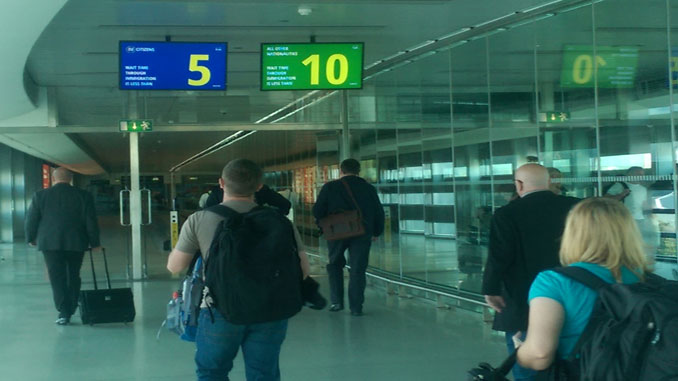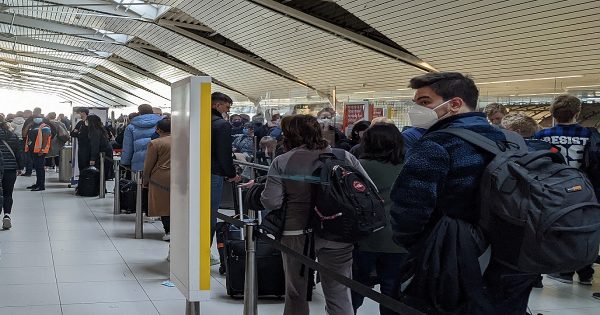The longest lines at airports nowadays are at security checkpoints and border control.
Long lines, unpacking and repacking, clothes and shoes off then on and so on can make it an unpleasant experience. Getting in the slowest queue can be the biggest annoyance of all.
Dublin Airport is using Bluetooth/WiFi sensors to efficiently manage the queues for greater processing efficiency and to display real-time wait times.
Passengers can get an idea of how long they will have to wait at parts of the journey like security and border control.
Dublin was the fastest growing major airport in Europe in the first six months of this year. In 2015, more than 25 million passengers traveled through Dublin Airport – the airports best ever year.
Despite the increase in popularity, the expectations of passengers and airlines alike remain high. The travelling public expect a stress-free journey through the airport, the regulator expects security wait time SLA’s to be achieved and airlines expect to achieve on-time-departures. The big challenges facing Dublin Airport for the next 20-25 years is the increase in passengers.
To help monitor and handle the increasing passenger numbers smoothly and efficiently, going through the same size airport, Dublin Airport enlisted the expertise of Lockheed Martin to design and implement the BlipTrack solution from Denmark based BLIP Systems.
The data allows the airport to respond promptly and effectively, if lines are becoming congested, to ultimately reduce processing times. In addition, the data is used to provide minute-by-minute live forecasts of waiting times for the remaining hours of the day. It enables the airport to adjust plans if expected wait times deviate from original forecasts, preventing queue build-up and avoiding potential KPI violations.
John Seely, Technology Projects Manager at Dublin:
“We have deployed the technology at our key pinch points throughout our airport,
including Security and Immigration. We use the information to help resource our
operation on the day and to identify pinch points, and potential passenger build ups.
The predictive data has proved to be very accurate, and is used by the staff to
monitor the operation and is also the queue time that is displayed on our mobile
application and monitors around the airport.”
David Nugent, Terminal Two Operations Manager at Dublin Airport:
“It tells us how many passengers have passed through a point at a given time. This gives us an exact real-time piece of information of about how long it took a group of passengers just to pass from one point to another point. Effectively ensuring that every passenger who comes through the building, gets to their gate on time, and that their flight departs on time, gives them the best experience that they possible can have.”
Karen Smyth, TI Security Duty Manager, DAA:
“I think it’s really important that passengers have an idea that it is going to take them possible approximately 20-25 minutes to get through the security screening area. Having this information to hand means they are more relaxed when they come through, they don’t just see it as a queue with no end in sight. They know that it’s going to take them that length time.”
Christian Bugislaus, Marketing Manager at BLIP Systems:
In order to improve traveler satisfaction, comply with service-level agreements and evaluate key performance indicators, it is important that the managers at Dublin Airport are able to measure and subsequently improve the flow and queue waiting times. The uncertainty around how long the queue process will take weighs heavily on the mind, particularly when confronted with what appears to be a lot of people in line in front of you. Displaying estimated wait times allow travelers to reduce frustration by creating realistic wait time expectations.”
The system has helped Dublin Airport to ensure that their passengers spend no longer than half an hour in the queue for security checks.
JFK Airport, Amsterdam Schiphol, Barcelona El-Prat, Copenhagen, Cincinnati, Keflavik and Oslo are also displaying real-time wait times, based on BlipTrack data.
N.B. Image credit: Blip Systems







